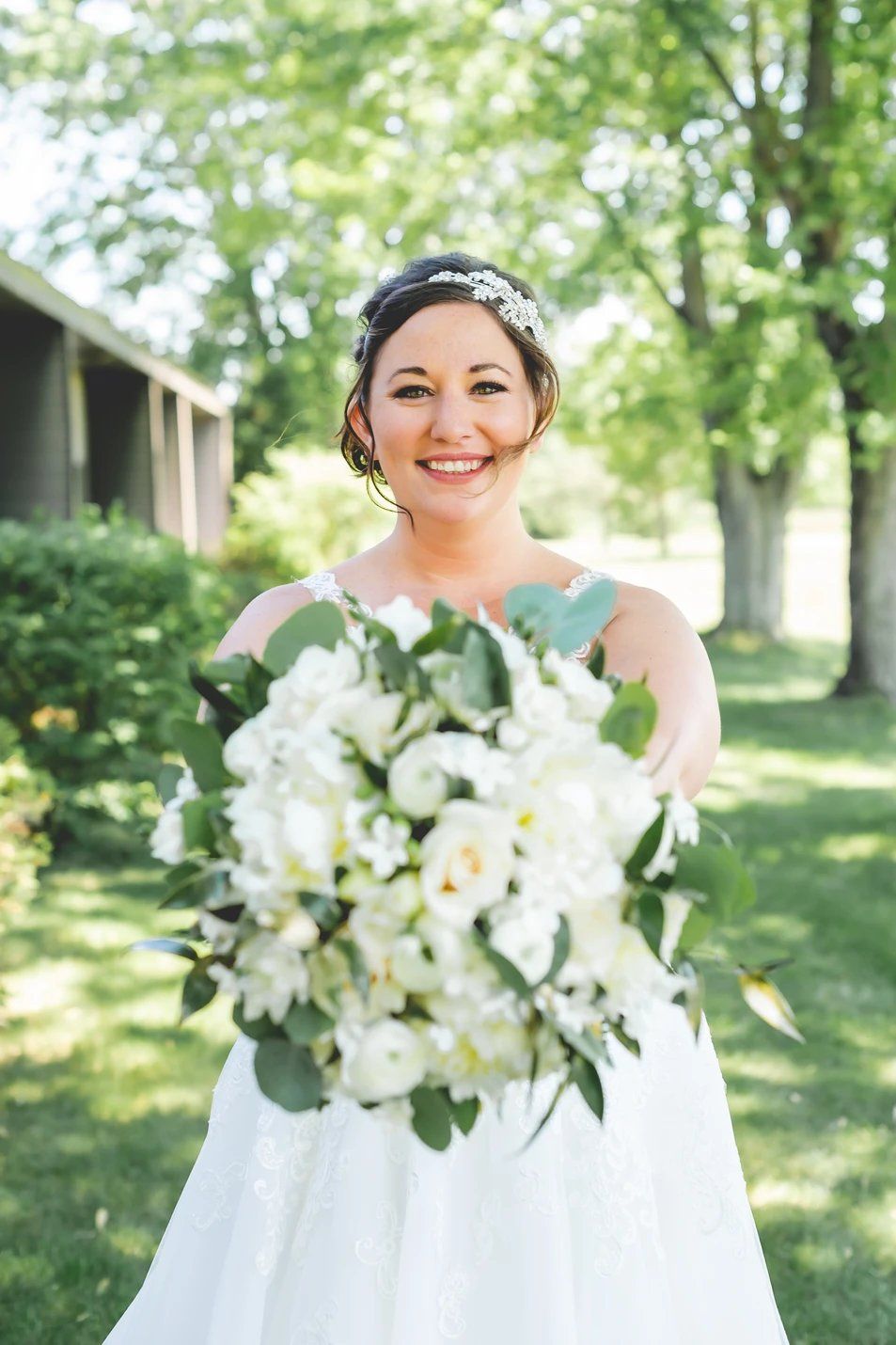1. What role would you like your flowers to play in your wedding?
Would you like them to stand out and be a focal point or be treated more like an accessory, like a piece of jewelry? How your flowers stand out is determined by the color scheme of your flowers against the dress color.
Example – lets say you have red bridesmaid’s dresses and you have a white gown. If you carry a bouquet of red roses, that bouquet will stand out next to your white dress. If the bridesmaids carry that same bouquet of flowers, the red roses will blend into their red dress. The same holds true for a bride carrying a white/ivory flowers when wearing a white or ivory dress.
If you are wearing the most beautiful dress ever made, you may prefer that the emphasis be on the gown and not on the flowers.
If you would like you flowers to act as an accessory, pick a similar color or colors with the same intensity as the backdrop. Example - If you are wearing a white or ivory dress, choose ivories or soft pastel colors. If your bridesmaids are wearing deep purple dresses, work with more purples or flowers with a lot of deep colors, such as deep blues or burgundy.
2. If you would like your flowers to pop, use bright, eye-catching colors, such as bright pink, bright oranges, yellows and lime greens.
The exception to the rule: do not use more than 50% of the bouquet the same color as the backdrop. Example - don't carry a majority of hot pink flowers on a hot pink dress, the pinks will blend together.
When you build a bouquet, try adding other bright colors to the mix.
3. Where do you want the emphasis to be?
If you are carrying a very bright bouquet of flowers, the first impression you make may be the flowers. If you don't like to be in the spotlight, you may prefer to have a more colorful bouquet so that the attention is on your flowers, not on you.
On the other hand, if you want to be the center of attention, consider darker flowers in your bouquet.
Dark colors such as black, plums, navy blue and deep burgundy are receding colors. This means they appear to be further away than other colors in the plane. By adding receding colors, your bouquet will appear to have more depth, but will also give the impression of a bare spot from a distance.
4. Use seasonal colors.
Keep in mind that seasonal flowers vary by region and everyone has their opinion on what a certain seasonal color is. Talk to your florist about seasonal flowers. Professional growers have done a remarkable job at extending the season for many flowers. Fresh flowers come from throughout the world. Each climate is best at growing a certain variety of flower. If you are going green, ask your florist about locally grown flowers.
5. Take into consideration the size of the bloom.
Just because a flower may be more expensive, doesn't mean that the bouquet will be more expensive. Larger flower heads will mean less flowers. Smaller flower heads mean more flowers.
Using foliage will “loosen” the look of the bouquet. Foliage can be used in-between flowers in the bouquet or just as the collar of the bouquet.
6. When using fresh flowers, a white or light-colored flower will show bruises sooner than a darker flower.
7. Sometimes colors symbolize different things.
A color, such as red in China and other Asian cultures, is felt to be good luck.
This is one of our special brides!

